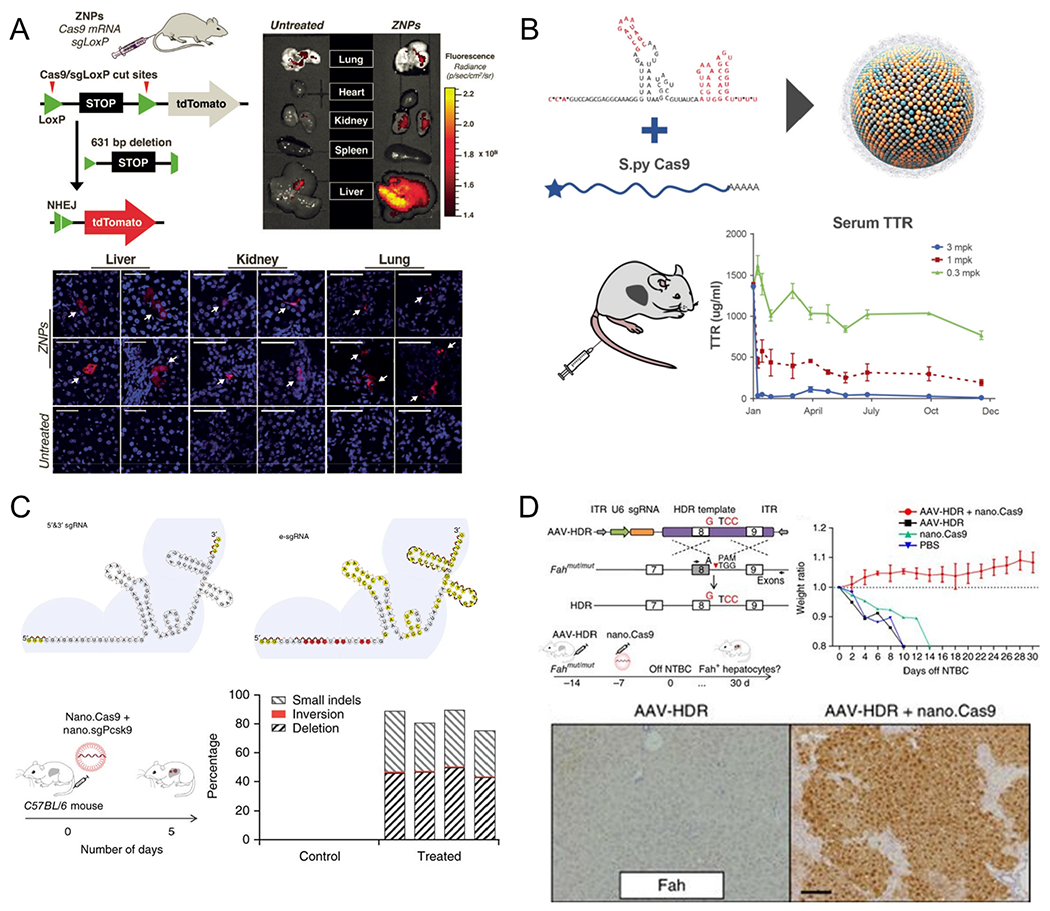Figure 7.

Nonviral delivery systems for liver-targeted genome editing via systemic administration. (A) zwitterionic amino lipid nanoparticles (ZNPs) co-delivering Cas9 mRNA and sgLoxP successfully deleted the stop cassette and activated expression of tdTomato protein mainly in the liver of tdTomato mouse model. Reproduced with permission from ref 64. Copyright 2017 John Wiley & Sons, Inc. (B) Single IV administration of a biodegradable lipid nanoparticle (LNP)-based delivery system (LNP-INT01) achieved and maintained ~70% of gene editing at Ttr locus and >97% knockdown of serum TTR levels for at least 12 months. Reproduced with permission from ref 85. Copyright 2018 Elsevier. (C) Structure illustration of the conventional 5′ and 3′ end modification (5′ and 3′ sgRNA) and the new e-sgRNA design. In vivo CKK-E12 LNP-based delivery of two e-sgRNAs targeting Pcsk9 and Cas9 mRNA mice induced > 80% gene editing of PCSK9 gene in the mouse liver. Reproduced with permission from ref 87. Copyright 2017 Springer Nature. (D) Combination of LNP-mediated delivery of Cas9 mRNA with adeno-associated viruses (AAVs) encoding a sgRNA and a repair template corrected the causative Fah-splicing mutation, generated Fah-positive hepatocytes, and rescued disease symptoms (including weight loss and liver damage) in type I tyrosinemia mice. Reproduced with permission from ref 51. Copyright 2016 Springer Nature.
